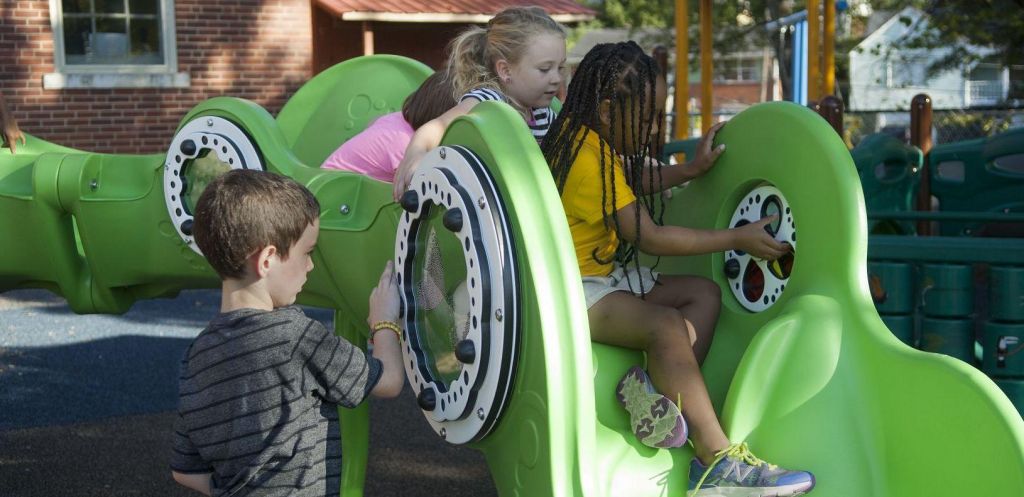Children love to climb. Check out any school playground in Georgia or Florida and you will see children run toward activities that allow them to climb and explore. On a well-designed school playground there are climbers at different degrees of challenge so children develop climbing skills along a continuum.
Playground climbers should appeal to beginner, intermediate, and advanced skill levels. Finding a way to include all three types of climbing activity is where Dominica Recreation Products can help.

Benefits of Climbing Play
Let's start out with a quick primer on why climbing play is important on school playgrounds. Climbing supports the development of gross and fine motor skills. They enhance balance and coordination, and promote problem solving, memory recall, and visualization. They also help children develop essential health and wellness milestones:
- Reaching for rungs above the shoulder requires a child to raise his or her arms, thereby increasing cardiovascular flow.
- Stretching increases and maintains flexibility.
- Climbing up ladders or walls builds upper body, grip, and arm strength.
- Steps and ladders develop leg strength and coordination.
Let's take a look at three ways you can add these benefits to your school playground.

Make it Part of a Play System
The primary playground equipment at any school playground is a play structure. Designed for ages 2 to 5 or ages 5 to 12, composite play structures give you the best opportunity to combine different play elements into a single space - including climbers.
Dominica Recreation Products designs play structures with GameTime commercial playground equipment. GameTime offers a wide range of climbers: vertical, angled, overhead, beginner, advanced, and everything in between. When designing a new play system, we can help you select the right climbing activities that encourage children of all skill levels to have fun and develop their climbing skills.

Make it a Freestanding Activity
If you already have a play structure, or if you want to expand your play area, freestanding climbers are an excellent option. With freestanding climbers, you free up congestion on the primary play structure. Freestanding climbers also give you the opportunity to create unique or adventurous climbing experiences.
Consider shorter climbers or themed climbers for young students to help them develop their skills. Add large, multi-user climbers to encourage social interaction, exploration, and discovery.

Make it Inclusive
Consider climbers designed to promote social and physical inclusion, like the Sensory Wave Climber from GameTime. The Sensory Wave can be used as a freestanding climber or a component attached to a play system. It features sensory rich play activities intentionally designed to offer comfortable reach and approach for people of all ages and abilities. This inclusive climber is designed with adapted hand and footholds at regular intervals and a transfer entry area, making it more usable for more people to enjoy the experience.
Next Steps
You can learn more about climbing play, as well as all six essential physical play elements in Play On! –a standards-based curriculum with 125 playground activities. It was developed by PlayCore in partnership with SHAPE America. If you're interested in bringing more climbing play to your school playground in Georgia or Florida, contact the DRP school playground expert in your area.
